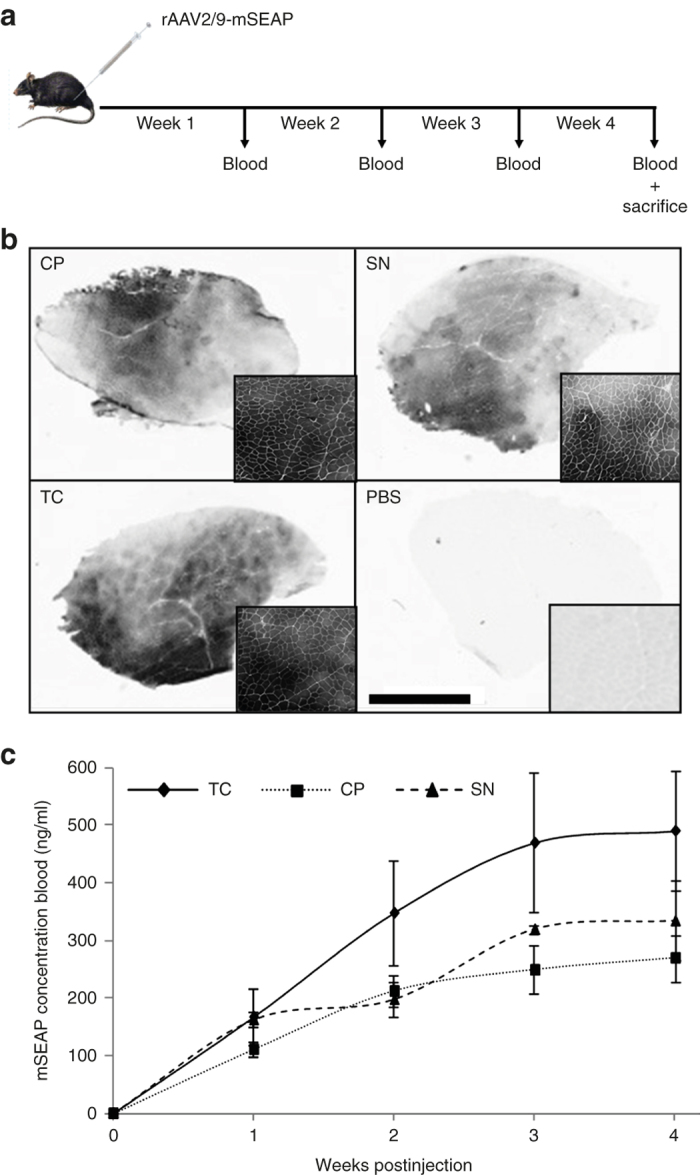Figure 4.

Comparison of in vivo transduction efficiency of recombinant adeno-associated virus (rAAV) recovered from CP, SN, or TC processes. (a) Schematic representation of the in vivo experimental protocol. C57Bl/10 adult mice are intramuscularly injected (Tibialis anterior (TA)) with the same suboptimal doses (1010 vg/TA) of CP, SN, or TC-derived rAAV, and blood is drawn weekly for one month before animal sacrifice and TA muscles recovery. Refer to Materials and Methods for detailed in vivo protocol. (b) The mSEAP revelation on TA muscle cryosections harvested 4 weeks post-transduction. Compared to PBS-injected muscle (bottom right), TC-derived vectors offer widespread TA mSEAP staining (bottom left) at level visually comparable to that of CP or SN vectors (top left and right respectively). Larger sections views are shown at bottom right of each TA muscle cryosections. Scale bar = 2 mm. (c) For more quantitative monitoring, in vivo mSEAP concentration is evaluated in blood-derived sera. From the second week postinjection, the mSEAP serum concentration average appears systematically higher in mice injected with TC-derived rAAV than with injections performed from CP- or SN-derived vectors. A stabilization of the mSEAP concentration is observed from the third week postinjection. (b) and (c) are obtained from mice injected with suboptimal doses of rAAV. Refer to Supplementary Table S3 and Supplementary Figure S1b for more detailed table and pictures from TA muscles injected at higher rAAV doses.
